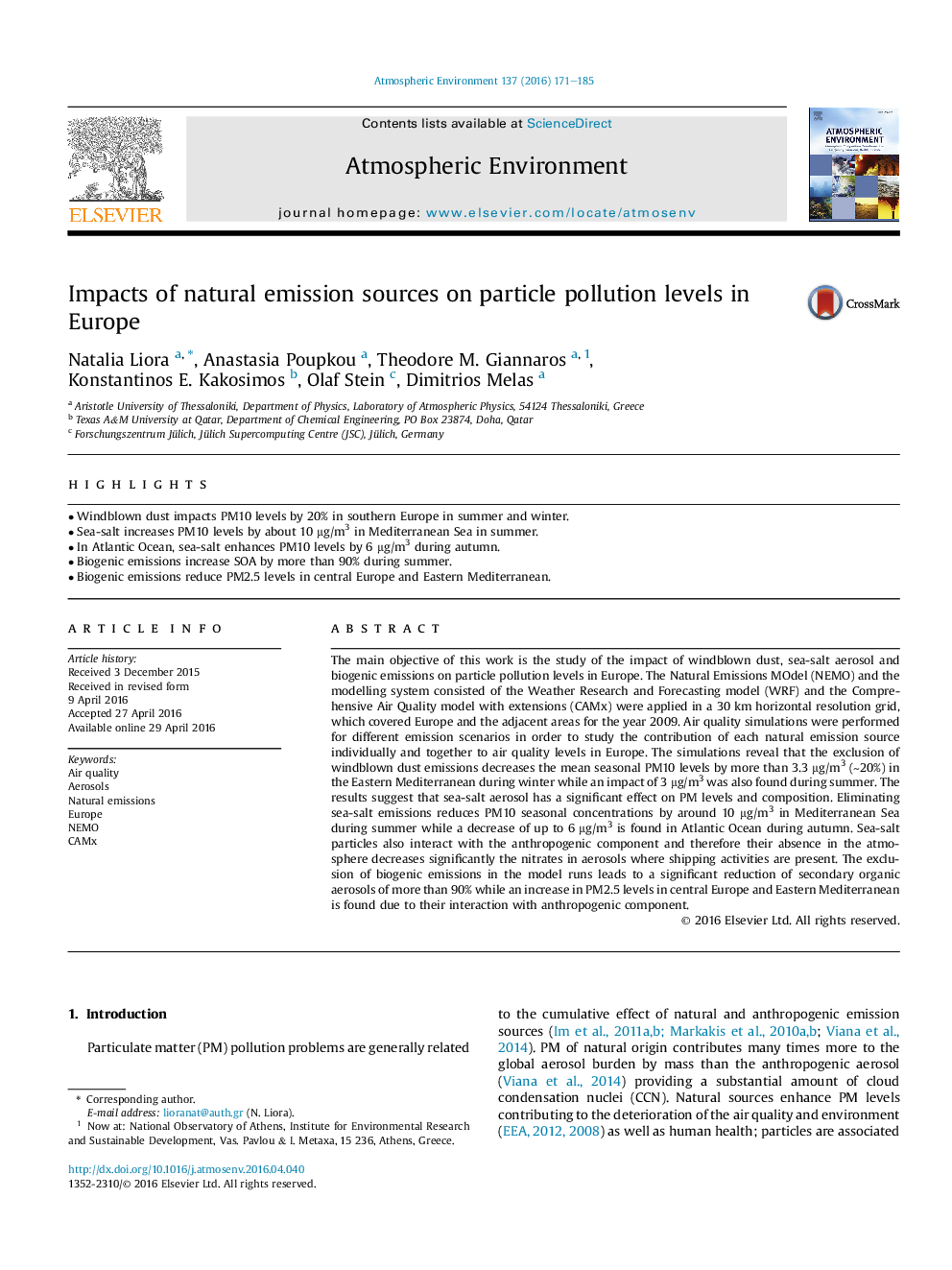| کد مقاله | کد نشریه | سال انتشار | مقاله انگلیسی | نسخه تمام متن |
|---|---|---|---|---|
| 4438055 | 1620337 | 2016 | 15 صفحه PDF | دانلود رایگان |
• Windblown dust impacts PM10 levels by 20% in southern Europe in summer and winter.
• Sea-salt increases PM10 levels by about 10 μg/m3 in Mediterranean Sea in summer.
• In Atlantic Ocean, sea-salt enhances PM10 levels by 6 μg/m3 during autumn.
• Biogenic emissions increase SOA by more than 90% during summer.
• Biogenic emissions reduce PM2.5 levels in central Europe and Eastern Mediterranean.
The main objective of this work is the study of the impact of windblown dust, sea-salt aerosol and biogenic emissions on particle pollution levels in Europe. The Natural Emissions MOdel (NEMO) and the modelling system consisted of the Weather Research and Forecasting model (WRF) and the Comprehensive Air Quality model with extensions (CAMx) were applied in a 30 km horizontal resolution grid, which covered Europe and the adjacent areas for the year 2009. Air quality simulations were performed for different emission scenarios in order to study the contribution of each natural emission source individually and together to air quality levels in Europe. The simulations reveal that the exclusion of windblown dust emissions decreases the mean seasonal PM10 levels by more than 3.3 μg/m3 (∼20%) in the Eastern Mediterranean during winter while an impact of 3 μg/m3 was also found during summer. The results suggest that sea-salt aerosol has a significant effect on PM levels and composition. Eliminating sea-salt emissions reduces PM10 seasonal concentrations by around 10 μg/m3 in Mediterranean Sea during summer while a decrease of up to 6 μg/m3 is found in Atlantic Ocean during autumn. Sea-salt particles also interact with the anthropogenic component and therefore their absence in the atmosphere decreases significantly the nitrates in aerosols where shipping activities are present. The exclusion of biogenic emissions in the model runs leads to a significant reduction of secondary organic aerosols of more than 90% while an increase in PM2.5 levels in central Europe and Eastern Mediterranean is found due to their interaction with anthropogenic component.
Journal: Atmospheric Environment - Volume 137, July 2016, Pages 171–185
